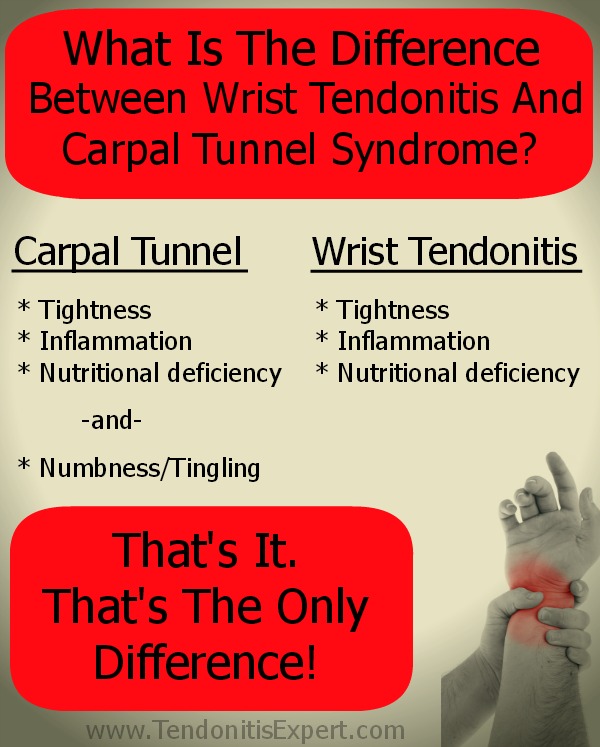Whiplash Neck Injury
Leads To Tendonitis
A Whiplash Neck Injury becomes a form of Tendonitis.
I doubt that you'll find a medical practitioner of any kind that would agree with that.
I make the case that Yes, Whiplash is Tendonitis in the Neck.
If you compare the Whiplash Neck Injury dynamic to the Tendonitis dynamic that causes acute and chronic pain, the similarity is a perfect match.
The accident that causes Whiplash also causes Tendonitis.
This explains why you can have an accident and minor, moderate, or severe whiplash, and twenty years later still experience pain, soreness, muscle weakness and fatigue, and reduced range of motion.
Whiplash injury claims for car crashes or work injury can get you some compensation for whiplash injury, BUT it's important to take into account that once that claim ends, the pain and/or the underlying problem, can continue for decades.
Whiplash Neck Injury
Whiplash is the common term for a Whiplash Neck Injury.
Whiplash Neck Injury is a name given to a particular type of cervical (neck) injury that is caused by car accidents, falling on your head, getting punched or hit in the head by an object, etc.
Anything that causes your head to go one direction and back the other direction, with any amount of force, can cause whiplash.
When your head 'whips' one direction, a few things happen in an instant: that cause a whiplash neck injury.
- Your nervous system fires an emergency contraction of all the muscles that could stop it going that direction, trying to slow/stop the motion and counter the force.
- These muscles fire so hard that combined with the acceleration forces on the weight of your head, they cause ripping and tearing of their own tissue and their anchors can rip loose to some degree.
- Connective tissue, which attaches to your muscles, tendons, bones, nerves, to everything really, over stretches and possibly rips.
- Ligament rips and tears as your vertebrae extend too far open. On the opposite side, you can get bruising and other damage as your vertebrae flex closed to far, crushing down on each other.
The force of your fifteen pound bowling ball (your head) being launched in a particular direction then basically reverses and that new acceleration force combines with the power of your muscles that are still firing to stop you going the first direction.
This whips your head back in the other direction, and again the nervous system fires all the muscles on the -other- side to try to stop the motion, and again you get the ripping and tearing, though generally to a much lesser degree.
The amount of damage and the severity of your newly acquired Whiplash Neck Injury really all depends on the variables of the accident...your positioning, the direction the blow comes from, the speeds and forces involved, and the strength and health of your neck structures.
And then, of course, come the Whiplash Symptoms.
Whiplash and Tendonitis
Injured Ligaments are a huge part of Whiplash but by definition aren't a part of Tendonitis.
Injured connective tissue other than the Tendon also technically is not Tendonitis.
But all those muscles that were involved in trying to protect your neck, that were hanging on for dear life trying to keep your skull from flying off its spine, contracted as hard as they could ant that put a lot of strain (and tear if the accident was bad enough) on their tendons.
Weak Points:
The most likely places for rip and tear are the structural weak points.
Muscle tissue itself almost never tears. The weak points are where you find injury.
So you have some injury, some small and or large damage to the tendon and WHAM! you have Tendonitis ....Inflammation of a Tendon.
First there is damage.
This comes in the form of stretching, ripping, tearing, shearing, separating fibers, and even the nervous system setting itself to a high stage of alert/danger.
You can have pain and inflammation even if you have no actual damage.
If the nervous system gets shocked or scared or even just -concerned- that you have injury, it can and will kick in an Inflammation Process.
Then you will feel pain, and you and your nervous system will both be fooled into thinking that you have an injury even if you may not actually have any damage.
The nervous system is really amazing in a lot of ways, and really stupid in other ways.
Damage instantly causes the nervous system to start a
Process of Inflammation. The nervous system tightens up muscles around pain and injury in an attempt to prevent more injury.
Damage, Inflammation, and Muscle Tightness are the three variables that kick start a brand new
Pain Causing Dynamic that stacks pain, inflammation, and tightness onto more pain, inflammation, and tightness, and repeats that again and again over time.
Due to the compression and other forces/factors involved, long term whiplash dynamic can cause a Bone Spur to form.
The Worst Kind Of Tendonitis
A Whiplash Neck Injury can become the worst kind of Tendonitis, as far as the nervous system is concerned. The cervical injury is from a fast, sudden, often unexpected, jarring and often painful blow.
Combine that with the emotional jarring and fear (totally connected to the nervous system) the nervous system feels you feeling.
In an instant, the protective aspect of your nervous system becomes your enemy, in that the way it tries to help you causes you short term pain and sets you up for long term suffering.
These are important factors to understand if you're looking for effective Whiplash Recovery.
And of course, whiplash can cause neck joint pain.
Why do I have tingling in my fingers if I have whiplash up in my neck?
This is an answer that I wrote on Answers.com a while back.
The answer was to a question about a whiplash neck injury, tingling in the fingers, and lack of reflex in the forearm.
The latter is a very rare occurrence and speaks of damage/problem much greater than the 'usual' whiplash outcome.
Answer:
When you are in a whiplash causing accident, your head gets launched in at least two directions. Your muscles grab on as hard as they can to slow the movement and to protect you from damage. Also, your nervous system gets freaked out at such a dangerous jolt, so it sets itself to an extremely high, watchful tone, or tensity.
Think about it like your nervous system is frightened and anxious. Symptoms of tingling in the fingers and lack of reflex in the forearm points to a couple different things. If it were just tingling and/or numbness in the fingers, the culprit would very likely be tight Scalene muscles. These are muscles at the front of your neck that compress the nerve pathway down to your arm and hand when they get tight.
The Scalenes can get dangerously tight after a whiplash causing injury and compress the nerve for long periods of time. If your forearm lacks 'a little' reflex, then it's likely that the accident caused severe damage and tightness and you have a major compression of the nerve (caused by tight muscles clamping down on the nerve.)
If you have a major lack of reflex, then either the nerve is seriously clamped down on, or there is something more serious happening, like a cervical (bone) misalignment that is compressing the nerve.
The finger tingling requires relaxation and lengthening of the muscles and connective tissue structures. The loss of reflex in the forearm requires serious concern and a trip to the doctor to rule out significant, more-than-just-whiplash damage.
How long does it take for a
Whiplash Neck Injury to heal?
and....
Will a Whiplash Neck Injury heal
on its own?
The first question really requires the second to be answered first.
No. A Whiplash Neck Injury does not heal on it's own.
That's accurate, but not the whole picture.
It will 'heal'.
But left to its own devices, the way the body heals leaves it less structurally strong than it was before. So it re-injures more easily.
Plus because of the ligament and tendon injury of the whiplash, the Tendonitis dynamic, the Pain Causing Dynamic, and resident Inflammation, the actual physical structure has changed.
Plus the nervous system constantly reads the 'healed', altered structure as a small injury.
Plus the nervous system is over protective and afraid for future injury, so it is READY to tense up and kick in more Inflammation at the slightest problem, and/or the slightest perceived problem.
So even though pain may lessen and even disappear as time passes, there is a lot more going on under the surface.
 |
Cause Whiplash! |
I have worked on people that had a whiplash injury accident decades ago, and they STILL have reduced range of motion, tightness, and flare ups of pain.
When I work on them, the musculature and connective tissue structures are incredibly tight, bound up, and dense because that's just what happens over time.
So on to the first question....How Long Does It Take For A Whiplash Neck Injury To Heal?
Depending on the severity of the damage, it can be a matter of a week or a few months.
But you have to remember that when a whiplash injury heals, it heals
Your question really is "How long till the pain goes away?"
Unless you take care of your neck whiplash in the RIGHT way, the pain may go away, but it is very likely that it will continue to haunt you in the future. Possibly the rest of your future.
There is effective Treatment for Whiplash and even chronic whiplash pain.
For instance, it doesn't take very much massage therapy work from a highly skilled massage therapist to reverse a Whiplash Neck Injury, even when its decades old.
And, the right home self care can get you out of pain and help you heal your whiplash and neck tendonitis correctly.
It's amazing what you can do with the RIGHT information.
Symptoms of Whiplash can be extremely painful and debilitating, or they
can just a nagging ache and limitation. Either way, you can fix your
neck.
Return to the top of this
Whiplash Neck Injury page.
Go to the Treatment for Whiplash page.
Go to the TendonitisExpert.com homepage.

